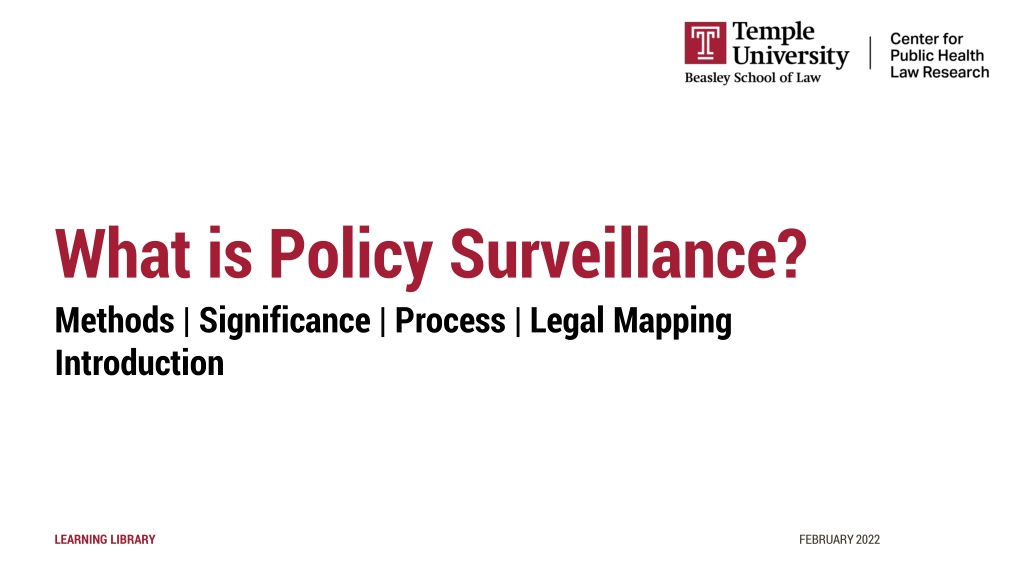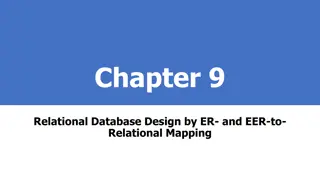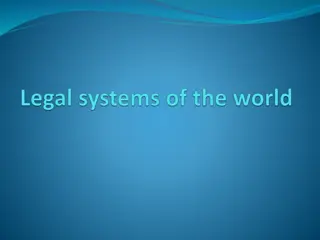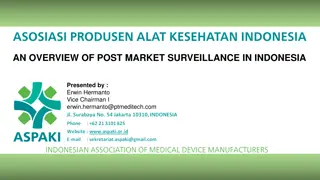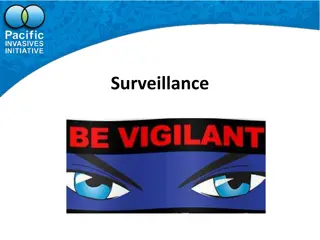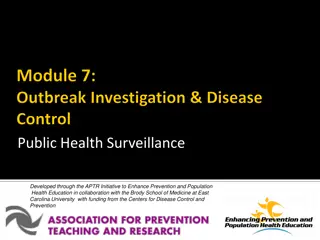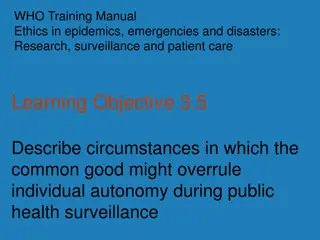Understanding Policy Surveillance and Legal Mapping in Public Health Law Practice
Policy surveillance involves the systematic tracking of public health laws and policies over time and across jurisdictions using a rigorous scientific approach to generate data for evaluation and research. This process helps create legal data, build workforce legal capacity, support innovation diffusion, and enable stakeholders to monitor progress. Legal mapping, on the other hand, assesses and captures key features and variations in laws and policies, emphasizing the application of legal skills in health policy development and public health practice. It involves legal scans, profiles, assessments, and is essential in legal epidemiology and policy surveillance endeavors.
Download Presentation

Please find below an Image/Link to download the presentation.
The content on the website is provided AS IS for your information and personal use only. It may not be sold, licensed, or shared on other websites without obtaining consent from the author. Download presentation by click this link. If you encounter any issues during the download, it is possible that the publisher has removed the file from their server.
E N D
Presentation Transcript
What is Policy Surveillance? Methods | Significance | Process | Legal Mapping Introduction LEARNING LIBRARY FEBRUARY 2022
Learning objectives Define policy surveillance Provide an overview of the policy surveillance process Explain the importance of policy surveillance Define legal mapping 2
Defining policy surveillance Tracks public health laws and policies over time and across jurisdictions Uses a rigorous scientific process to create data for evaluation and empirical research
What makes policy surveillance a scientific approach to collecting and analyzing laws? It uses a systematic approach It emphasizes transparency There is a focus on delivering a highly accurate product through quality control The process is replicable 4
Why is policy surveillance important? Creates legal data for evaluation Builds and Supports workforce legal capacity Supports the diffusion of innovation Policy Surveillance Allows stakeholders to track progress
What is legal mapping? A process for assessing and capturing important features and variation in laws and policies, across time and space. PUBLIC HEALTH LAW PRACTICE LEGAL EPIDEMIOLOGY The application of professional legal skills in the development of health policy and the practice of public health. The scientific study and deployment of law as a factor in the cause, distribution, and prevention of disease and injury in a population. Legal scan Legal profile Policy surveillance Legal assessments 7
Legal mapping models Mapping model Type of data produced Time and place studied Essential team resources Legal epidemiology Policy surveillance Produces robust data using a rigorous scientific process Tracks laws over time and across multiple jurisdictions Team of at least three is required Legal assessments Produces robust data using a rigorous scientific process Maps laws at one specific point in time, across multiple jurisdictions Team of at least three is required Public health law practice Legal scan Quick scan of a topic or domain Maps laws across multiple jurisdictions at one specific point in time Can be completed by one person Legal profile Quick scan of a domain, or multiple domains Maps laws in one specific jurisdiction at one specific point in time Can be completed by one person 8
Summary Policy surveillance Tracks public health laws and policies over time and across jurisdictions Uses a rigorous scientific process to create data for evaluation and empirical research The policy surveillance process Defining your scope and background research, question development, collecting and building the law, coding the law, quality control, publication and dissemination, and tracking and updating the law Policy surveillance: significance Supports the diffusion of innovation Allows stakeholders to track progress Builds policy capacity in the health policy workforce Creates data suitable for use in rigorous evaluation studies Legal mapping Process for assessing and capturing important features and variation across laws and policies Includes two different models for surveilling laws and policies on a topic 9 Legal epidemiology vs. public health law practice
